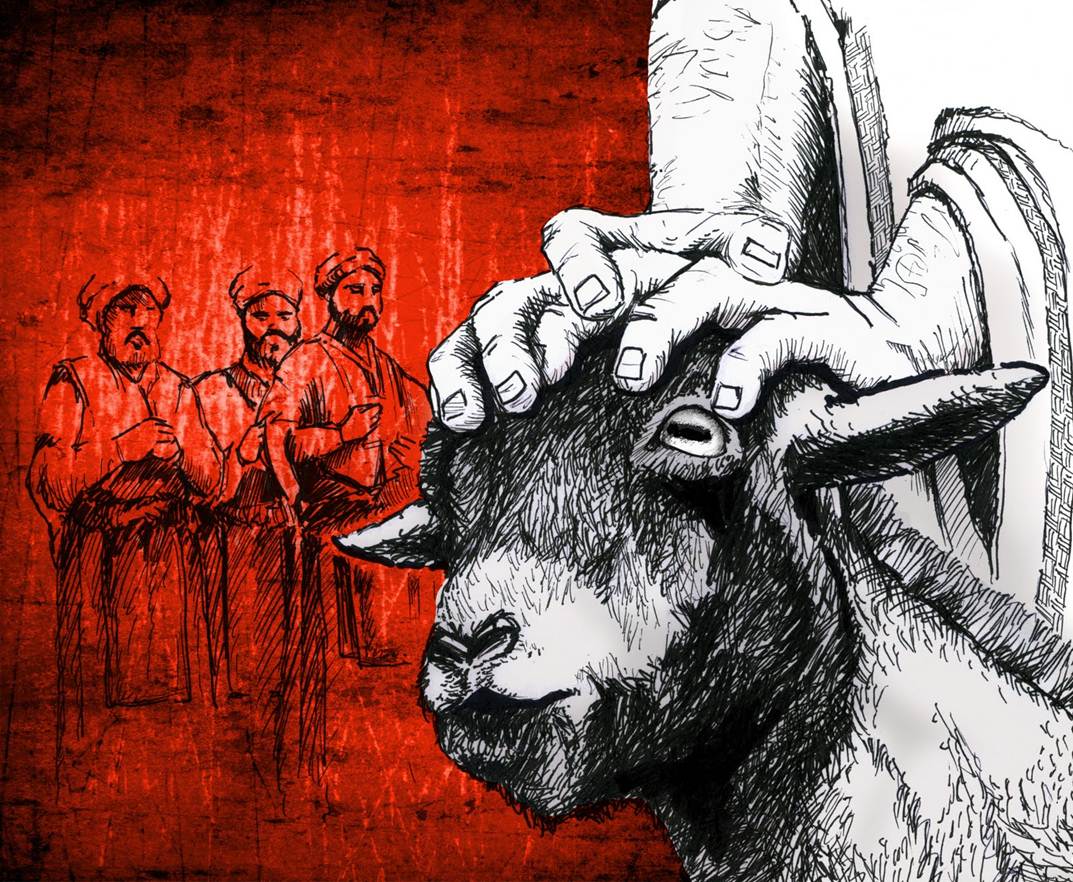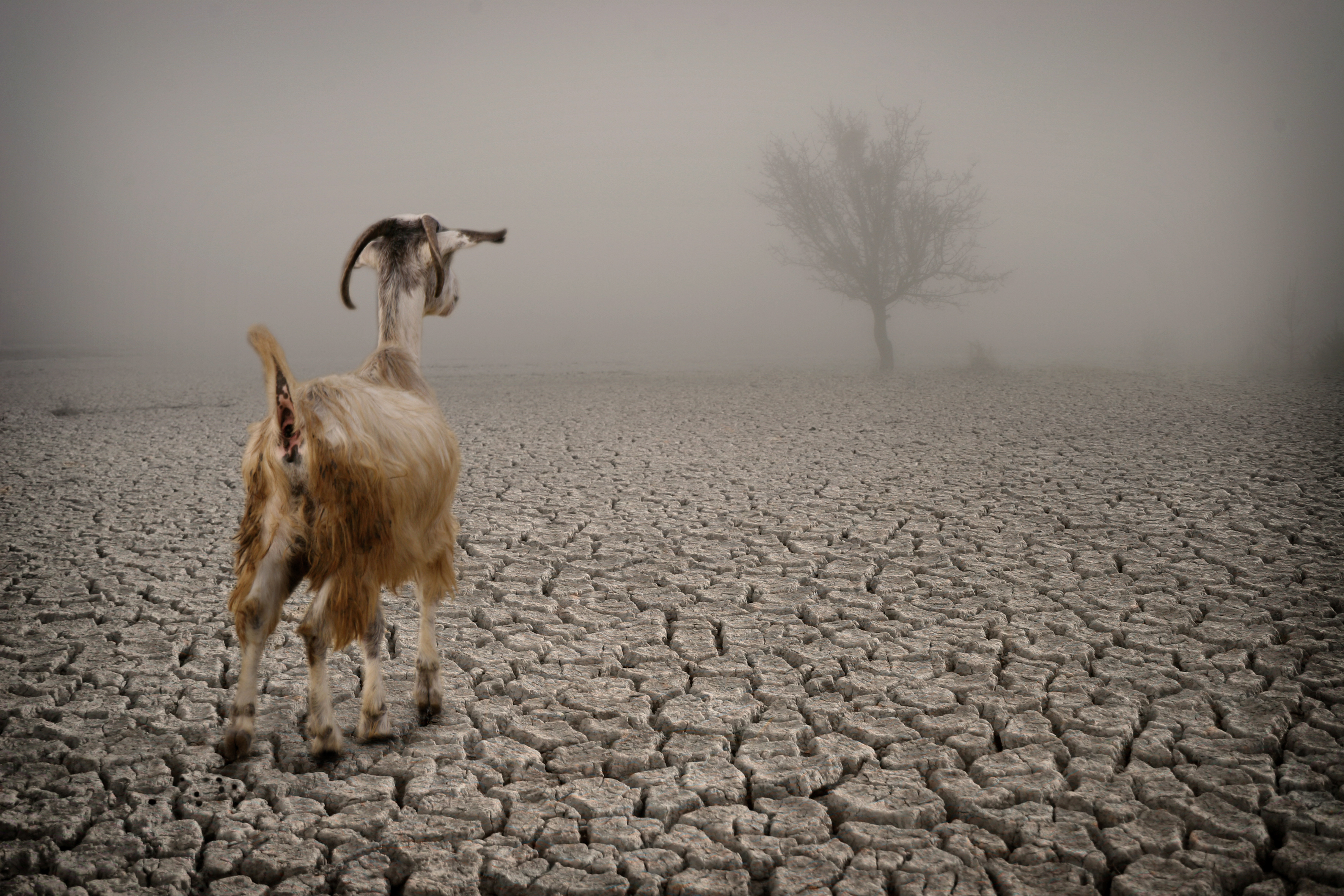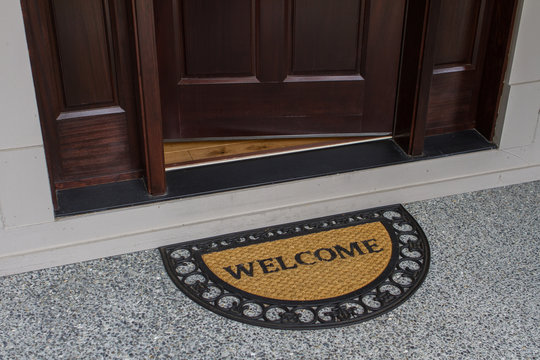
A sermon on Leviticus 16 by Rev Richard Keith on Sunday 13 June 2021
Kenneth Graham’s much loved book, “The Wind in the Willows”, begins with Mole spring cleaning his house. Spring cleaning is an important ritual in places of the world that see snow during winter. For weeks people shut their houses up with the wood fire burning. Ash and soot and the smell of smoke accumulate. There is often very little point in doing any big cleaning because for the whole of winter the house is going to stay shut up with the fire burning. It’s only going to get dirty again.
But when spring comes and the snow has gone for another 9 months, the house can be opened up, cleaned from top to bottom and good as new. It’s a fresh new start. At least for another 9 months.
In Leviticus chapter 16, in the ritual of the Day of Atonement, we see the annual spring cleaning of the tabernacle. Remember the tabernacle? The portable temple that the Israelites built at Mt Sinai and dismantled and moved and reassembled during the times of wandering with Moses in the wilderness that was later replaced by King Solomon with a more permanent structure, the temple in Jerusalem.
:max_bytes(150000):strip_icc()/Tabernacle-463048237-e3402f218aac492ab3eff6e13fadcf9d.jpg)
But there was a problem with the tabernacle. You see, the Israelites were people like us. They said and did things that hurt each other and offended their holy God. And even their priests were only human. And during the daily routine of worship in the tabernacle, these mere mortals, the priests and the people they served, brought the stink and filth of their sin into God’s holy place. Whether it was the tabernacle in Moses’ time, or later, the temple. The place where God said that his name should dwell. The place where he would reveal the glory of his holy presence. That filth of sin in God’s holy place would accumulate over time until something had to be done. Like a house shut up for the three months of winter. Or like when there’s a big funeral in the church on a rainy day with 150, 200 people tracking wet grass and mud all over the place. Including the minister if he forgets to wipe his feet. It makes a mess that someone has to clean up. In the same way, the tabernacle needed to be washed clean, purified once a year through the ritual of the Day of Atonement.
Of course, there was another important reason for this day. And that is made clear in the first two verses of Leviticus chapter 16.
The Lord spoke to Moses after the death of the two sons of Aaron who died when they approached the Lord. The Lord said to Moses: “Tell your brother Aaron not to come whenever he chooses into the Most Holy Place behind the curtain in front of the atonement cover on the ark, or else he will die, because I appear in the cloud over the atonement cover.
We learned last week about Nadab and Abihu, the two sons of Aaron who made a batch in incense of their own invention and tried to offer it to the Lord. But instead, fire came and consumed them. The message from the Lord was clear. As if he was saying, “You can’t come to me on your terms, but on my terms. If you come to me any old way that you choose, you will die. Instead, I will show you how you can come into my presence.”
In the tabernacle that presence of God was represented by the ark of the covenant which sat in the Most Holy Place.
In this picture, we are looking side on into a model of the tabernacle in which one of the walls has been removed. The Most Holy Place is that chamber on the right behind the thick curtain. Only one man, on only one day of the year, was allowed through that curtain in that chamber. The man was the high priest. And that day was the Day of Atonement.
You could say that the purpose of the day was the spring cleaning of the tabernacle and that the purpose of the ritual was for the high priest to survive the spring cleaning and to catch a brief glimpse of God’s presence. We may no longer celebrate the Day of Atonement but through studying its ritual we can learn what can wash our sins away as good as new and how we unworthy sinners can approach the holy presence of God.
There are quite a few elements in the ritual of that day that show how important it is. Because we do special things on special days. You know like how we decorate a tree for Christmas or how many people go to a dawn service on Anzac Day. They are special days. In fact, what else can explain why people are annoyed by hot cross buns except the fact that the supermarkets have turned something that is special for Easter into something you can get for a whole four months of the year.

Instead of the elaborate robes that the high priest wore every other day, he wore a plain white linen tunic. The high priest had to have a bath before he put the linen tunic on and a second bath after he took the tunic off. On other days, the high priest only had to wash his hands and feet during the ritual. I don’t mean that he only had two baths a year and they were both on the same day. I mean that the baths were only a part of the ritual on the Day of Atonement. Even if it didn’t fall on a Saturday, the Day of Atonement was a day of rest. Anyone who worked on this sacred day was excluded from membership of the community. Lastly, it was the only day of the year that was a day of fasting. It was a special time of intense self-examination and prayer. Because on it, and through its rituals, the sins of the people, all of the sins of all of the people, would be forgiven and removed like they had never happened.
In the ritual, the high priest took a bull for his own sin offering and two goats as a sin offering for the people. We learned about the sin offering last week. We were created for love and life. By our wrong thoughts and words and actions we serve the powers of hate and death. Our lives are forfeit. But through the offering of a sacrifice the worshipers sins are place on the animal which dies in its place. Through the ritual the offeror passes through the judgment of sin and survives the experience in order to receive forgiveness and peace with God. But on the Day of Atonement there were two goats. One was chosen as a sacrifice and the other was chosen for a very different role.

The high priest went into the Most Holy Place twice. Firstly, to burn incense. The smoke hid him from the ark representing how the sinner is hidden from the wrath of the holy God. After burning the incense, the high priest sprinkled the corners of the ark with the blood of the bull for his own sins. The second time he went in was to sprinkle the blood of the goat for the sins of the people. The blood showed that a life has been given and that the debt of sin has been paid.
And with that, half the job had already been done. The tabernacle had been purified from the defiling presence of sin by the presentation of the blood as a witness that a life had been given for a life. One man had gone in to the presence of God in the most sacred chamber of the tabernacle. One man, the high priest, representing the rest of the people.
But you have to admit that what has happened has been invisible to the rest of the people. Even for the people with the best view, all they have seen is an old man dressed in white walk behind a thick curtain. It’s like if I started preaching by walking into the room behind me and talking quietly to myself. The sermon would happen. The words would be said. It’s just that no one would hear it. It’s like the curtain of the tabernacle was saying to the people, “Access is restricted, keep out.” How could the people be reassured that their sins were forgiven when everything that had happened took place behind closed doors?

Well that’s what the other goat was for. The high priest took the second goat and placed his hands on its head and confessed over it all the wickedness and rebellion of the people and put it on the goat’s head. There was no other regular day of public confession of sins quite like it. And then a man was appointed to lead the goat out of the community and into the wilderness where it was left. The man came back and had a bath. The high priest offered a burnt offering for himself and then for the people. And that was the end of the day’s ritual.

The message was, your sins are gone. The second goat shows what the first goat did behind the curtain. It carried the people’s sin and took them away. Like when I had my gall bladder out. It hurt before they took it out and because of the surgery it hurt after they took it out. I didn’t feel much different. In some ways, I felt worse. So to reassure me that all was fixed, I was given a plastic container full of the gallstones that were causing all the problem. Gallstones taken and taken away. Gone for good, never to hurt me again. It was a vivid reminder that I would get better again. In the same way the second goat was visual proof of what the first goat had achieved. The forgiveness of sins and the promise of the presence of God.
However, the only problem with a spring cleaning is that winter comes again and it needs to be done each year. In the same way, the people kept sinning, the high priest was still only human, and the ritual was repeated each year. Before too long another two goats were needed. One’s life was taken and the other was led away. And the curtain remained as a vivid reminder that access to God was restricted.
Until Jesus died and the curtain in the temple was torn from top to bottom. The keep out sign was broken and removed because it was no longer needed. For on the cross Jesus achieved what the high priests had tried to do on the Day of Atonement. Through him, through his body, through the tearing of his flesh, a door had been opened and all believers now have the right to enter into the presence of God. There is no longer any need for a Day of Atonement each year. The first Good Friday was the day of all days when atonement was made for our sins and we were washed clean like new. Now in Christ, every person has the right to enter the presence of God. The high priest could go into a sacred chamber built with hands once a year, but we can draw near to our heavenly Father at any time. We can come to him in prayer and the great promise of the gospel is that when his kingdom comes in all its fullness we will dwell with him forever.
As Gentiles, non-Jews, we no longer celebrate the Day of Atonement. You may have never heard of it until today. But it teaches us two things. Firstly it reminds us of the seriousness of our problem. By our wickedness and injustice we offend God and defile ourselves. We are not fit to be temples, the dwelling place of God’s Holy Spirit. But secondly, it reminds us of the completeness of our problem’s solution. The blood of Jesus achieves what the blood of goats never could. His one perfect life is more than enough not only for my sin but for the sin of the whole world. He took my sin and he took it away. To prove it, he rose from the dead, showing that the weight of the world’s sin was not enough to keep him in the grave, showing that the weight of my sin will not be enough to keep me in my grave, nor you in yours. Like the goat led into the wilderness, the cross of Christ stands as a vivid reminder that although I am a great sinner, he is a great saviour. And so my sin no longer defines me. It no longer has the right to say who I am or what my destiny will be.
As the book of Hebrews says,
since we have confidence to enter the Most Holy Place by the blood of Jesus, by a new and living way opened for us through the curtain, that is, his body, and since we have a great priest over the house of God, let us draw near to God with a sincere heart in full assurance of faith, having our hearts sprinkled to cleanse us from a guilty conscience and having our bodies washed with pure water.
What we have in the cross is something better than a spring cleaning. Because Jesus is not only human but also fully divine. He does not need to offer sacrifice for his own sin, as well as ours. His blood is better than the blood of bulls and goats, because it is only shed once. What it achieves cannot be undone so it does not have to be done again. There is no curtain between us and God, keeping us out. Instead there is an open door to the presence of God and a welcome mat out the front. We can come to him anytime with our problems in prayer, and we experience his love in the fellowship of his people.

What can wash our sins away as good as new? How can we unworthy sinners approach the holy presence of God? Through the holy blood of the living Lord Jesus who has opened the door to God. Don’t let your great sins or even your small ones keep you from a living relationship with God, because however great they are our saviour Jesus is even greater. And no one can shut the door that he has opened.

Excellent preaching Richard – Thanking the Lord